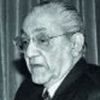Kashmir suffocated
Regardless of the political impasse, the routes of old should be reopened at least on humanitarian grounds.

Do not think you are dealing with a part of Uttar Pradesh, Bihar or Gujarat. You are dealing with an area, historically and geographically and in all manner of things, with a certain background. If we bring our local ideas and local prejudices everywhere, we will never consolidate. We have to be men of vision and there has to be a broadminded acceptance of facts in order to integrate really. And real integration comes of the mind and the heart, and not of some clause which you may impose on other people,” Jawaharlal Nehru told the Lok Sabha in 1952.
Nehru’s statement on Kashmir’s uniqueness was apt. Kashmir was indeed the subcontinent’s bridge to Central Asia. Its maharaja kept up a clandestine correspondence with potentates of the states in that region as well as with Russia. For long, Kashmir’s traders and artisans had close and continuous relations with Central Asia. Kashmiri scholar K. Warikoo meticulously recorded that rich history in his book, Central Asia and Kashmir.
Now those memories are being revived. For good reason, Kashmir feels cheated by broken pledges and oppressed by recent moves to dilute whatever little is left of its autonomy. This feeling of political deceit and constitutional oppression is coupled with a growing sense of physical suffocation. All routes are closed — except the one to India. This was not the intention of Indians and Pakistanis when they agreed on a ceasefire in Kashmir on New Year’s Day in 1949. On Jan 15, 1949, the commanders-in-chief of the Indian and Pakistani armies met under the auspices of the UN’s chief military observer, Brigadier Angle, who ably played a mediatory role. He succeeded in getting both sides to “restore the communications by road between Srinagar and Rawalpindi”, not Muzaffarabad. It was a constructive move. They further agreed “to rebuild the necessary bridges. In addition, telephonic liaisons between the two localities will be restored.”
One is not aware of the fate of this accord. Sixty years later, in October 2008, Pakistan and India agreed on trade across the Line of Control as a confidence-building measure. Last month, trade suffered a blow when India alleged that heroin was being smuggled in a truck and arrested the driver. Scarcely a day passes without Mumbai’s papers carrying similar reports from the air and sea customs.
In 2008, Haseeb Drabu rightly pointed out that the accord on cross-LoC trade was incomplete without banking and telecommunications facilities. Heading the team that drafted the flamboyantly titled PDP manifesto Aspirational Agenda (2014), he included the omissions plus more, such as monetisation of the present barter trade and the opening of more trade routes. As finance minister, he has taken no steps in this direction. On Aug 19, Chief Minister Mehbooba Mufti called for opening up of the Kargil area “to the outside world as a gateway to Central Asia”.
She added, “Opening cross-Line-of-Control routes can initiate a process of trade in the region by virtue of which J&K can reclaim its status of a gateway to Central Asia”. Further, opening strategic routes such as Kargil-Skardu and Tutuk-Khaplu “will help in the peace process”.
This wily politician was responding to the public mood, but has not taken one concrete measure in this venture. The mood was well captured by respected journalist Iftikhar Gilani in DNA India (Aug 18): “Noted scholar Siddiq Wahid, who had recently travelled to Central Asian countries, said that the region in its sociocultural frame is so akin to Kashmir that he wondered whether Kashmir is in its essence Central or South Asian. Until the early 20th century, the Kashmir valley with its great geostrategic significance was an economic hub, linking South and Central Asia. In fact, Islamic scholar Mir Syed Ali Hamadani who brought the Sufi version of Islam to Kashmir, though originally from Iran, travelled to Kashmir from Tajikistan. He is buried in the Klobe province of the Central Asian Republic.”
He went on: “Much before the Partition in 1947, Kashmir had already lost its vast linkages, with the Soviet Union blocking Tajikistan and then Chinese conquests of Kashgar and Tibet. The drawing up of LoC along with heavy militarisation dealt another severe blow, completing the cycle of locking the region. Significantly, till this date, raw material for world famous Kashmiri shawls and carpets is imported from these regions and far off Mongolia.”
Gilani warned, “The abrupt disruption of linkages has created a ‘siege mentality’ in Kashmir, which, when mixed with political issues, becomes a lethal cocktail. There is a case to break this ‘prison mindset’.”
Regardless of the political impasse, the routes of old should be reopened — at least on humanitarian grounds.
By arrangement with Dawn
